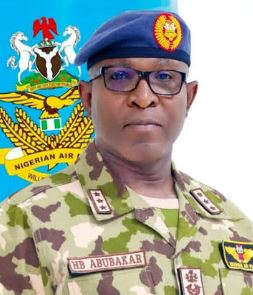By Kingsley Omonobi
Abuja — In a strategic move to enhance the serviceability, reliability, and longevity of its growing fleet, the Nigerian Air Force (NAF) has officially adopted a Predictive Maintenance Culture and established a new Directorate of Aircraft Life Cycle Management (DALCM) under its Aircraft Engineering Branch.
Disclosing this at the 2025 Aircraft Engineering Conference in Abuja on Wednesday, the Chief of the Air Staff (CAS), Air Marshal Hasan Bala Abubakar, said the initiative aims to transform how the NAF sustains its assets in an era of advanced, high-tech air platforms.
“With the increasing induction of modern aircraft into our inventory, we can no longer rely solely on traditional maintenance methods,” Abubakar said. “Predictive maintenance will allow us to anticipate potential failures and proactively schedule interventions, minimizing downtime and ensuring operational readiness.”
The newly established Directorate of Aircraft Life Cycle Management will be responsible for overseeing all phases of NAF aircraft—from acquisition and induction to operational deployment, and finally retirement.
“This life cycle approach ensures that all fleet management activities are strategically aligned with our evolving operational requirements,” the Air Chief said. “It’s an integral part of building a self-sustaining and mission-ready Air Force.”
Abubakar revealed that in the past two years alone, the NAF had acquired 15 new aircraft, including:
6 T-129 ATAK helicopters
2 AW-109 Trekker Type A helicopters
3 Beechcraft King Air aircraft
4 Diamond 62 aircraft
An additional 49 platforms are expected by the end of 2026, among them:
3 CASA 295 aircraft
10 AW 109 Trekker Type B helicopters
12 AH-1Z helicopters
24 M-346 fighter aircraft
“These high-tech platforms require sophisticated, data-driven maintenance protocols. We’ve set a target to achieve a 90% aircraft serviceability rate across all platforms by Q4 2025,” the CAS noted.
Current average serviceability sits at 72%, thanks to proactive logistics, timely provision of critical spares, and in-country maintenance upgrades.
Highlighting recent engineering successes, Abubakar noted:
First in-country 4800-hour depot maintenance on DO-228 aircraft (NAF 031)
Reactivation of a DO-228 aircraft grounded for 23 years
Repair of A-29 Super Tucano landing gear
Reactivation of multiple helicopters, A-Jet aircraft, and ATR 42s
Structural repairs on various aircraft including the L-39ZA, A-Jet, and Mi-35P
In-house recovery efforts included:
6 LARZAC engines for A-Jet aircraft
3 T-56-A-15LFE engines for C-130H aircraft
Repairs to over 60 avionics and ground support components
Armament personnel were also praised for retrofitting weapon systems, overhauling ejection seats, repairing DEFA guns, adapting rocket launchers, and coordinating the repair of nearly 1,000 weapons at the Defence Industries Corporation of Nigeria (DICON).
Training and Technological Advancements
To sustain progress, the NAF has intensified training in predictive maintenance using data analytics, enhanced technical skill development, and introduced comprehensive digital documentation across platforms.
“We’re building capacity not just for today, but for the future,” Abubakar said. “Fleet modernization demands that new acquisitions undergo rigorous planning and lifecycle support from day one.”
Engineering Chief Highlights Strategic Shift
In his remarks, Chief of Aircraft Engineering, Air Vice Marshal Amadu, emphasized that DALCM will manage platforms “from cradle to grave,” improving sustainment and force structure planning.
Standardized procedures for consumables and rotables
In-country maintenance initiatives with international partners (e.g., Turkish Aerospace Industries)
Proposed overhaul facilities for Pratt & Whitney engines and Super Mushshak instruments
Research and development in advanced weapon control systems
“These initiatives are not only boosting serviceability but positioning NAF as a self-reliant, technologically driven force,” Amadu said.
Operational Readiness at the Core
Air Marshal Abubakar concluded by reaffirming that “mission success in modern air operations depends on aircraft availability, airworthiness, and sustained performance.”
“By institutionalizing robust, predictive maintenance and life cycle management, the Nigerian Air Force is laying the foundation for long-term operational excellence and national security resilience.”
The post NAF launches Aircraft Life Cycle Directorate to boost fleet serviceability appeared first on Vanguard News.

